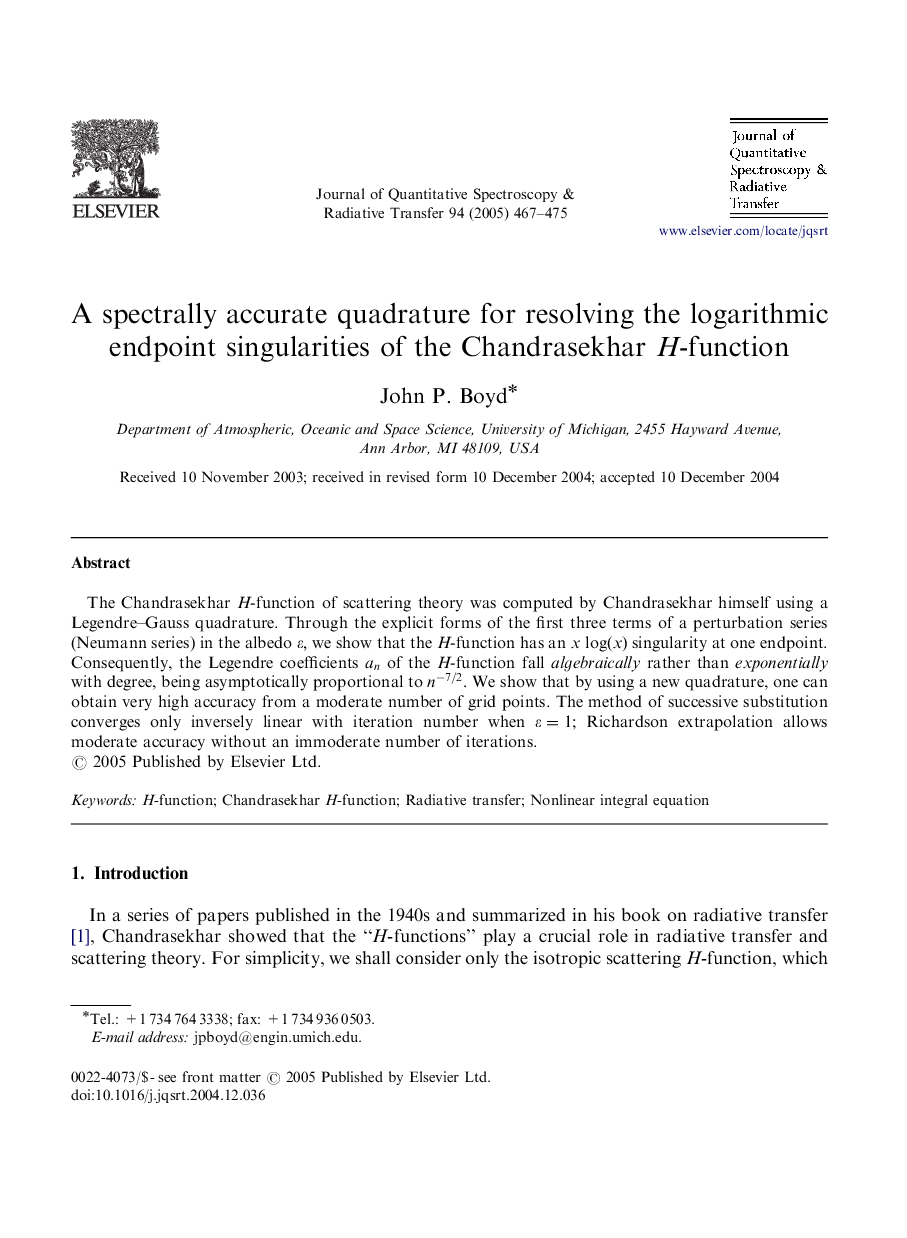| Article ID | Journal | Published Year | Pages | File Type |
|---|---|---|---|---|
| 9599071 | Journal of Quantitative Spectroscopy and Radiative Transfer | 2005 | 9 Pages |
Abstract
The Chandrasekhar H-function of scattering theory was computed by Chandrasekhar himself using a Legendre-Gauss quadrature. Through the explicit forms of the first three terms of a perturbation series (Neumann series) in the albedo ε, we show that the H-function has an xlog(x) singularity at one endpoint. Consequently, the Legendre coefficients an of the H-function fall algebraically rather than exponentially with degree, being asymptotically proportional to n-7/2. We show that by using a new quadrature, one can obtain very high accuracy from a moderate number of grid points. The method of successive substitution converges only inversely linear with iteration number when ε=1; Richardson extrapolation allows moderate accuracy without an immoderate number of iterations.
Related Topics
Physical Sciences and Engineering
Chemistry
Spectroscopy
Authors
John P. Boyd,
